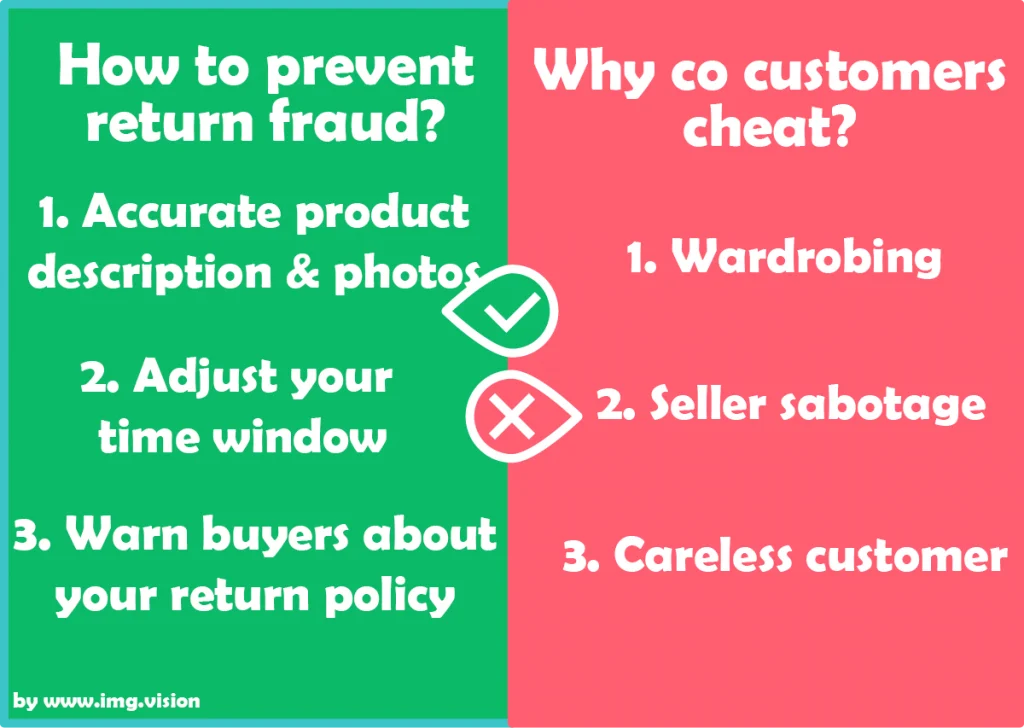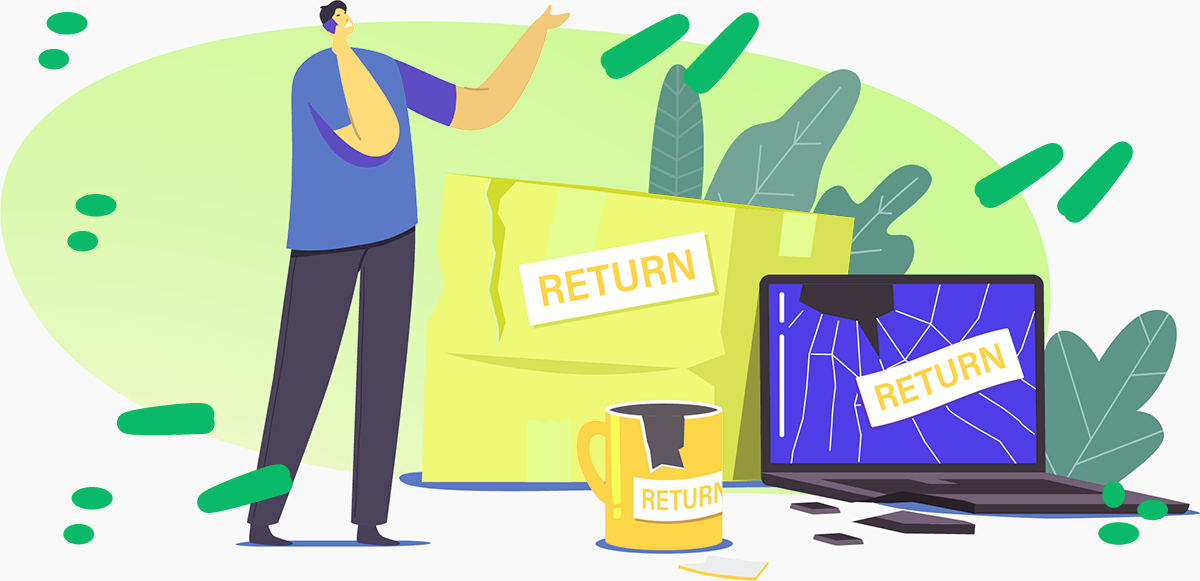Have you heard of James Kwarteng? Amazon has! In 2019 he was arrested in Spain after making nearly $370,000 by returning Amazon packages. Not the actual product items, though, he sent back boxes filled with dirt and kept the refund money.
A year earlier Erin and Leah Finan from Indiana were convicted after making over $1.2 million, requesting returns but selling the items instead.
Perhaps these examples are extreme, but if you are an online retailer, you are likely to have experienced return fraud too.
Inside this article
Is a free return service necessary?
In early 2022, Zara decided to longer allow free returns of online sales in 37 different countries. Although returning clothes to a store is still free, their policy choice is a risky move. A lot of research shows consumers’ expectations are high. A 2021 survey by Klarna, for instance, shows 84% of customers would turn their back on brands after a bad return experience.
And yet, Zara’s choice is not unexpected and many brands are believed to follow their lead. Why? Because sellers lose a lot of money and time handling returns. It is not exactly environmentally friendly either.
How many e-commerce orders are returned?
Return rates vary across different product categories and product value. Yet, statics clearly point out that returning goods is far more common in the online marketplace. According to webretailer.com ‘the return rate for clothing bought online has been estimated at around 20%, while the rate for physical stores is less than half that.’
The wrong size or items not meeting expectations are listed as the most common reasons to return an item. Products getting damaged during shipment or receiving the wrong item are also factors that increase the likelihood of returns. Naturally, brick-and-mortar shops are less likely to encounter these issues.
However, there are customers that buy items online with the intention of returning them from the start.

Why do people cheat the returns system?
Understanding why people return items, can help you put a better return policy in place. We have put together a top 3.
Wardrobing
Wardrobing is the phenomenon of buying an item, using it once and then returning it. As the word suggests, it is most commonly done with clothing, but electronics are also frequently “wardrobed”.
Buyers often believe their actions are innocent and they feel protected by the anonymity of the internet.
Seller sabotage
Some sellers will go to great lengths to eliminate their competition. Sellers have been known to place a large order to clear out their competitor’s stock, returning items as late as possible or even claiming products are a counterfeit.
Careless customer
Not all returns are fueled by fraud. Some buyers genuinely bought the wrong size or color. Customers fill out return forms quickly and carelessly select the wrong return reason. They do not think it matters.
Furthermore, alternative solutions like sending a spare part or a partial refund are often more of a hassle to organize. And so, buyers choose the easy way out.
What can you do to prevent return fraud?
Prevention is better than fixing. Here are some things you can do to protect yourself.
Accurate product descriptions and photos
You use product descriptions to sell your products, so you may be tempted to be overly positive. There is nothing wrong with that, as long as you describe your product fully and accurately. Nobody likes to be lied to. And yes, holding back information is also lying. Asking customers to write a review is another great way to offer information.
Including as many photos as possible is another way to increase the likelihood of meeting your customers’ expectations. Moreover, if you have pictures of your product before shipping, you have proof in hand that the item was not damaged or counterfeit when you sent it.
Adjust your time window for returns
Experiment with increasing the return window for your products. Counterintuitively, increasing the time window for returns might decrease the return rate. First of all, longer return periods make customers feel more confident about their buy and so they are likely to buy more. Secondly, buyers will feel less pressured to return an item quickly and perhaps even forget to return completely.
However, a long return period also means customers can use your product for a longer period of time. If they do return it, the item is more likely to show signs of use. This may make it unsellable.
Bottomline, consider what works best for you and your type of product. You do not need to follow the 30 day guideline many online marketplaces automatically put in place. Experiment and find out what works best for you.
Warn buyers about your return policy
Imagine ordering a product and receiving a shipping confirmation email saying the order has been packed and inspected before shipping. Attached is a photo of the ready-to-ship item. The e-mail has a footer warning the buyer you have a zero tolerance policy on fraud. Later, the item arrives and is sealed with visible tamper-proof labels or tape. There is a sticker on the box stating the product is security marked and the return request information slip asks the buyer to send photos of their product before returning their item.
Apart from the tamper-proof tape, none of this requires any additional investment. You do not actually have to check the photos, but creating the idea that you are checking up on returns can be enough to discourage scammers. You are not being rude, customers can still return products that don’t meet their expectations, but you are safeguarding your product quality.
What to do with returned products?
Returns will always be part of ecommerce. So what is the best way to deal with them?
Let them keep it
Consider how much it will cost you to handle a returned product. Especially if you are selling a generic low-cost product, letting customers keep it can be the cheapest way out. It does, however, encourage fraud.
Repair it
Offering a repair service for damaged items will discourage fraudulent returns. Scammers won’t get away with sending you a box of dirt and it is more eco-friendly. On the downside, not all products can easily be repaired and it is a pricy strategy.
Re-sell it
Try selling returned goods at a discount price on your usual marketplace or on eBay. Alternatively, sell it to a liquidation company that takes care of refurbishing and selling goods for you.
A growing amount of customers is looking to shop sustainably. Buying second-hand or returned goods is part of that philosophy. This strategy is worth considering if you want to portray yourself as an environmentally friendly business.
Donate it
Another way to boost your image is to donate returned goods. Yes, this means you are giving away products for free, but it is often cheaper than paying to dispose of them.

